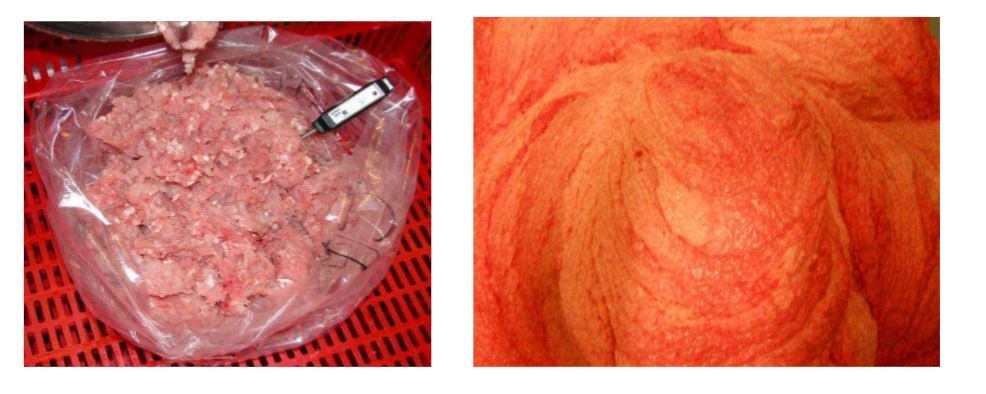European regulation (No 853/2004) defines MSM as “the product obtained by removing meat from flesh-bearing bones after boning or from poultry carcasses, using mechanical means resulting in the loss or modification of the muscle fibre structure”.
It is known as ‘pink slime’ due its colour and consistency, and is associated with low quality, processed meat products such as sausages.
MSM is permitted under both EU and Hungarian law but, according to the Hungarian Minister for Agriculture and Rural Development, it is being increasingly used in foods usually associated with high quality.
The Ministry has penned a draft regulation to tighten up use.
“In recent years, mainly due to economic considerations, MSM has become an increasingly common addition to fresh meat as an ingredient in meat products,” reads the draft text.
“This practice has become more and more widespread also in case of traditional, high-quality products such as virsli, Vienna sausage and párizsi, a type of cold cut that is similar to mortadella.
“Under pressure from major retail chains, cheaper production means have come to the fore, which by all means implies the use of cheaper, lower-quality ingredients.”
After concertation with academic experts and industry representatives, it has proposed limits of 50–150 mg of calcium per kilo of fresh meat and 350 mg per kilo of meat products.
Determining the calcium content is used as a way to assess the amount of MSM in a food product. During the production process, the mineral is ‘blasted’ off the bone and enters the MSM.
The proposed regulation reads: “Where the raw material (primary ingredient) used to produce the meat product or prepared meat contains more than 200 mg / kg of calcium, it shall be considered to be mechanically separated from the bones;
“If the meat product or prepared meat has a calcium content of more than 350 mg / kg, the product will certainly contain mechanically separated meat from bones. The limit shall be understood without reference to the calcium content in calcium containing ingredients other than those of the meat and bones in the product which are mechanically separated from the meat in the product.
These limits would make it easier to conduct official controls of existing bans as well as bringing action against them, the Ministry said.
Calcium that comes from other ingredients, such as soy or cheese, could be identified using product sheets and recipes. The draft legislation also stipulates the method that must be used to test for calcium content (MSZ EN 15505: 2008 Annex B or an equivalent method).
Highs and lows

EU rules differentiate between high and low pressure MSM. Low pressure MSM is produced using techniques that do not alter the structure of the bones, meaning the calcium content is not significantly higher than that of minced meat.
In a 2013 opinion, the European Food Safety Authority said MSM from poultry and swine carries similar risks to non-mechanically separated meat unless it was produced using high-pressure production techniques, which increase the risk of microbial growth.
MSM from cattle and sheep is banned in the EU due to increased risk of bovine spongiform encephalopathy (BSE), known as mad cow's disease.
The Hungarian government has sent a copy of the draft regulation to the Commission, which will decide whether it is in line with EU law.
